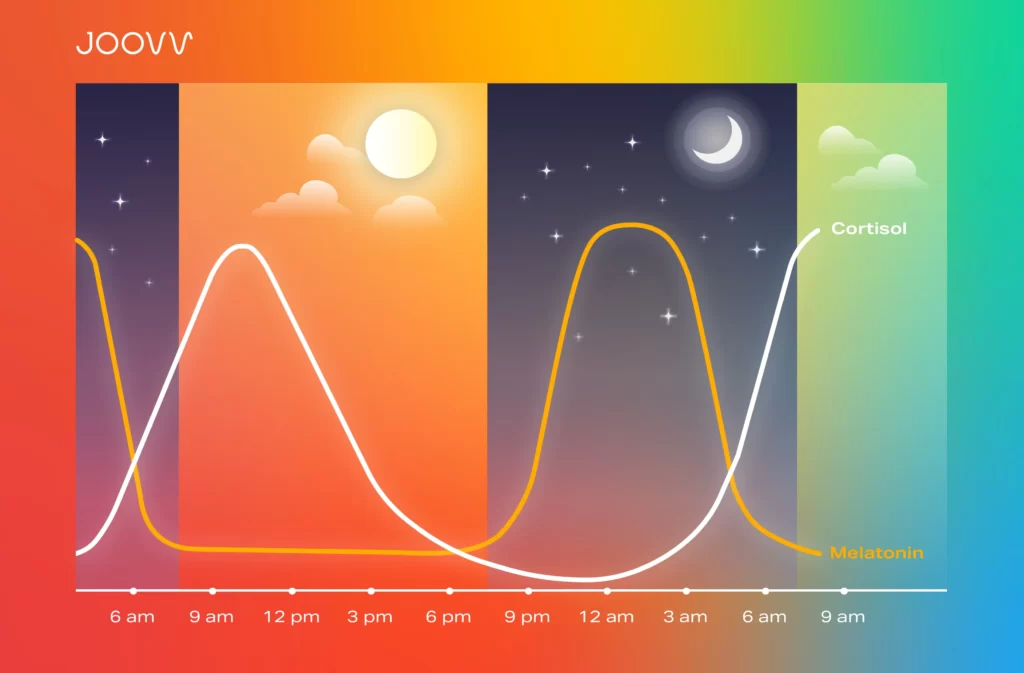When it comes to meditation, the benefits are well documented – reduced stress, improved attention and focus, better sleep, and less anxiety and symptoms of depression. Often not so readily discussed are meditation’s benefits on pathways and processes specific to our endocrine (hormonal) and immune systems. Can meditation’s impacts on stress reduction have a flow-on effect to improve not only our mental health, but our physical health?
Effects of Compassion Meditation
A 2009 study by Pace and colleagues set about discovering the effects of a certain type of meditation, compassion meditation, on our body’s reaction to a stressful situation. The stressful situation was something many of us dread – spending a few minutes anticipating public speaking, five minutes actually public speaking, and a further five minutes performing mental arithmetic in front of a panel of people (this test is termed the Trier Social Stress Test, or TSST). There’s no shame if you developed the sweats purely at the thought of this.

The study set about comparing how two groups of participants – those who completed six weeks of guided compassion meditation practice versus a group that engaged in healthy discussion together (but did not practice meditation) – reacted to the stressful event described above. The findings were pretty cool.
No measurable effect was observed within the discussion group on TSST responses, nor was there any reduction in the participants’ interleukin-6 (IL-6) or cortisol levels (I’ll elaborate more on this below). However, within the meditation group, increased meditation practice was correlated with decreased TSST-induced IL-6, and overall distress scores.
What on earth is interleukin-6 and cortisol?
Interleukin-6 (IL-6) is a member of the pro-inflammatory cytokine family. Its primary role is to induce the expression of a variety of proteins responsible for acute inflammation, and plays an important role in the proliferation and differentiation of cells throughout our body. IL-6 is observed to be elevated in the adipose (fat) tissue and blood plasma of obese subjects. Although important, IL-6 is a measure of our body’s state of inflammation, the over-production of which is a known precursor to many degenerative and chronic diseases, as well as cancer.
Similarly, cortisol is a hormone of vital importance to our effective daily functioning as human beings. Often termed the stress hormone, it is as an integral player in our body’s ‘fight or flight’ response to a stressful event. If danger looms in the shape of a lunging huntsman spider or a swerving vehicle, our autonomic nervous system kicks into gear to make a number of swift survival-ensuring changes. Included in this survival response is the immediate release of cortisol.
Our body’s natural rhythms
Now cortisol in itself is not a villainous character. However, when cortisol levels are elevated for extended periods of time, health issues will arise. In evolutionary terms, our body’s are yet to catch up with our 21st century, fast-paced demanding lifestyles. Our brain’s developed throughout the Pleistocene epoch (span of time some 10,000 to 2.5 million years ago), a time when stressors would be acute, not chronic. Nowadays, a typical 24 hours for some could mean one deadline after another, rushing here there and everywhere, all the while being over-stimulated by noise/light/screens/electromagnetic frequencies of all types – there’s no respite, and no time for cortisol levels to dissipate.
The above graph highlights our body’s natural cortisol cycle (in conjunction with melatonin, which helps our body get to sleep) – peaking in the morning as we rise to prepare for what’s ahead, and decreasing throughout the day. Now imagine following this morning peak you are hit with one stressor after another and that yellow peak turns into a sustained elevated line. Knowing elevated cortisol is deleterious to our health, the health impacts can be vast.
Cortisol and body weight
When our body is stressed, blood is re-routed to the areas it’s needed – primarily our muscles, heart and lungs. If we’re running for our lives the last thing our body cares about is digesting the veggie wrap we had for lunch. Chronic stress therefore affects our ability to properly digest food. In addition, if our body is worried that it’s in an unstable situation, it’s more likely to cling to fat as a survival strategy. The result – the tendency for cortisol to increase abdominal fat deposits leading to an increased waist line.
Let’s come back to compassion meditation
Knowing what we know about the subjects of Pace’s 2009 study, we can correlate the effect of compassion meditation on IL-6 and cortisol levels, and therefore weight management. Of course, weight loss is multi-faceted, and though I’m not suggesting that simply by meditating and acting with compassion will lead to rapid weight loss, it’s an important tool to consider. Especially if you’re having a stressful day and need to lower that cortisol curve to avoid an elevated flat-line.
Where to start…?
Searching compassion within my Insight Timer app reveals a large number of results.

I know that simply putting ten minutes aside at the start or end of my day can have a significant effect on calming my mind, help to reduce over-thinking, and ultimately give me the tools to better manage life’s stressful events.
The simple act of focusing on breathing can have a similar benefit – whether that’s only breathing through your nose as you work on your latest project or practicing box breathing on your morning commute. This will naturally lower cortisol levels by moving you into a state of rest and digest, and do you no harm if your end goal is weight loss.
Exercise too of course, is a great de-stressor (click here for a previous Restart blog on this topic).
And when it comes to practicing compassion, Professor of Psychology and Psychiatry at the University of Wisconsin-Madison Richard Davidson states “the very act of concern for others’ well-being creates a greater sense of well-being within oneself”.
Could be the perfect time to dust off the practice of performing random acts of kindness!
Luke
Ps all references are hyperlinked above!


0 Comments